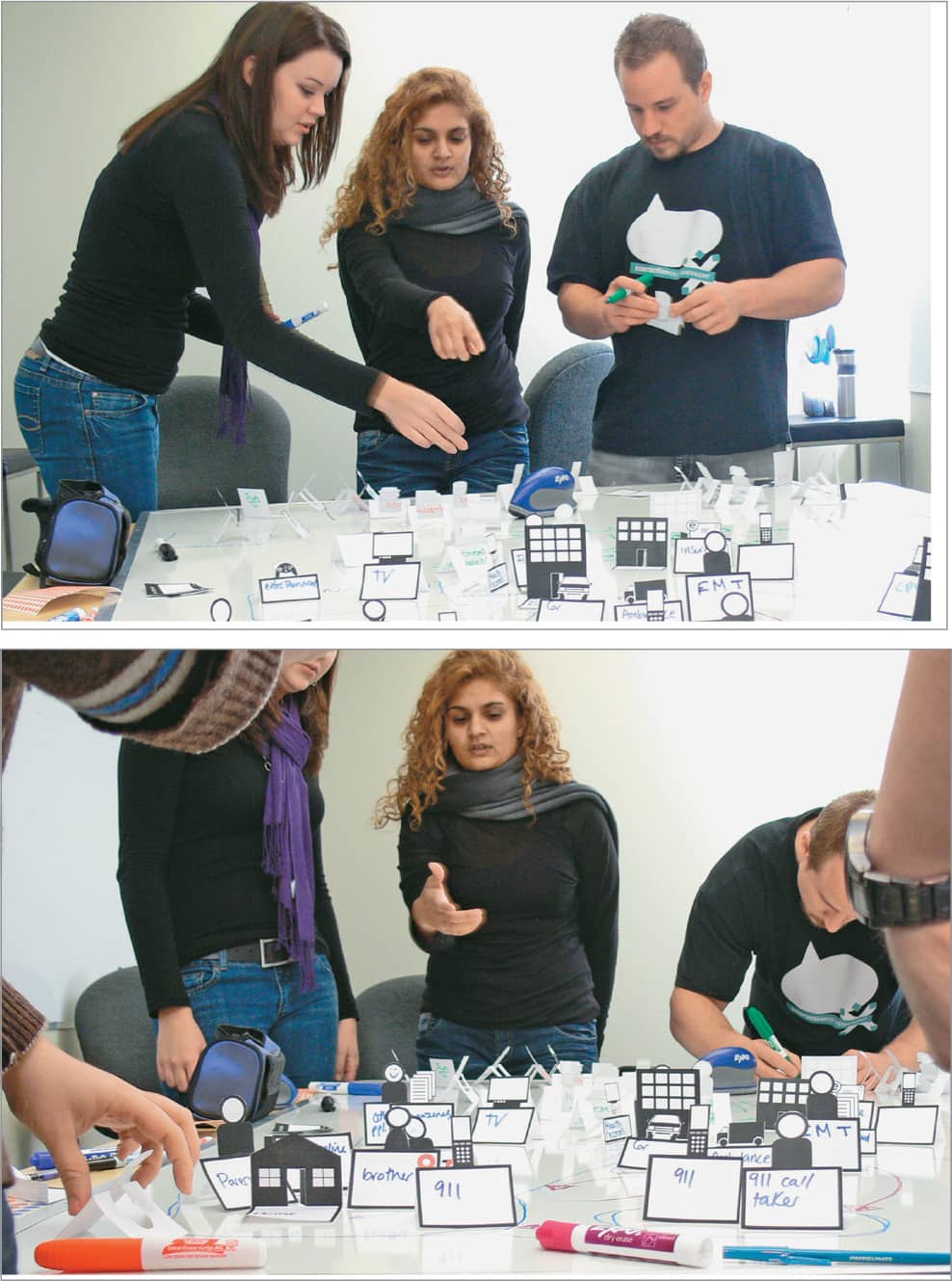RESEARCH METHOD • RESEARCH DELIVERABLE
09 Business Origami

Business origami enables teams to paper-prototype the interaction and value exchange among people, artifacts, and environments in a multichannel system.1
Business origami is a service design activity that models current and future multichannel systems. It provides a forum in which project stakeholders can come together in a workshop setting to build a physical representation of a system, and then prototype future or alternative states of the same system. The method uses paper-cutout tokens to represent the actors, artifacts, environments, and technologies that comprise a system, and a horizontal whiteboard surface is transformed into a stage or set, where a series of interactions play out to tell a story. By bringing the system elements into the physical dimension, stakeholders can make explicit the value exchange between elements as they occur over time and within the context of a scenario.
The purpose of the method is to articulate a model of the system, particularly the value exchange that happens between tokens on the set. The tokens are used to model face-to-face interactions, or interactions that are mediated by technology or artifacts, within a specific environment and context. The interactions between tokens are represented by arrows that are drawn on the whiteboard surface with dry-erase markers. The arrows are labeled with the value exchange of the interaction, articulating what value people get out of the interaction. If the scenario is to “optimize a shopping experience,” an interaction between a customer and a salesperson could show a customer “buying a superior running shoe” and the salesperson “building a relationship” or “making a sale.” The method requires a constrained series of scenarios that are tied to specific project goals. Scenarios focus participants’ thinking and can help identify tangential components of the system that fall outside of the scope of the exercise.
The method works best early in the design process, and should include a multidisciplinary mix of four to six participants. As the team populates the set with tokens that represent people, places, and artifacts, inherent in the method is a structured means to carry on conversation that promotes consensus, understanding of different perspectives, and multidisciplinary collaboration.
Although photos and video “flythroughs” can document the business origami set, the experience of modeling the system is the critical deliverable. The final result is a physical representation of the current system design that reveals how the different touch points realistically play out over time. The method gives all participants an equal voice in the prototyping activity, and it can bridge different perspectives by providing a common reference for further discussion.
1. Jess McMullin is the founder of the Centre for Citizen Experience in Canada. He was introduced to the business origami method by Professor Kenta Ono, from Chiba University in Japan. McMullin now teaches the method at design workshops, speaks about it at conferences, and consults with organizations that want to use business origami and value-centered design methods to evaluate and explore system design. See:

The name of the business origami method pays homage to the Japanese art of folding paper into symbolic shapes and figures. The paper pop-up tokens that are placed on the set represent people, locations, artifacts, technology (cellphones, computers, laptops, TV, game consoles) things that move people (bicycles, streetcars, cars, buses), channels (Salesforce.com, SAP), third parties (suppliers), social media (Twitter, Facebook), and proprietary tools (databases). These are placed on a horizontal whiteboard, and a dry-erase marker is used to help illustrate relationships between the different tokens.
Courtesy of Jess McMullin, Centre for Citizen Experience

